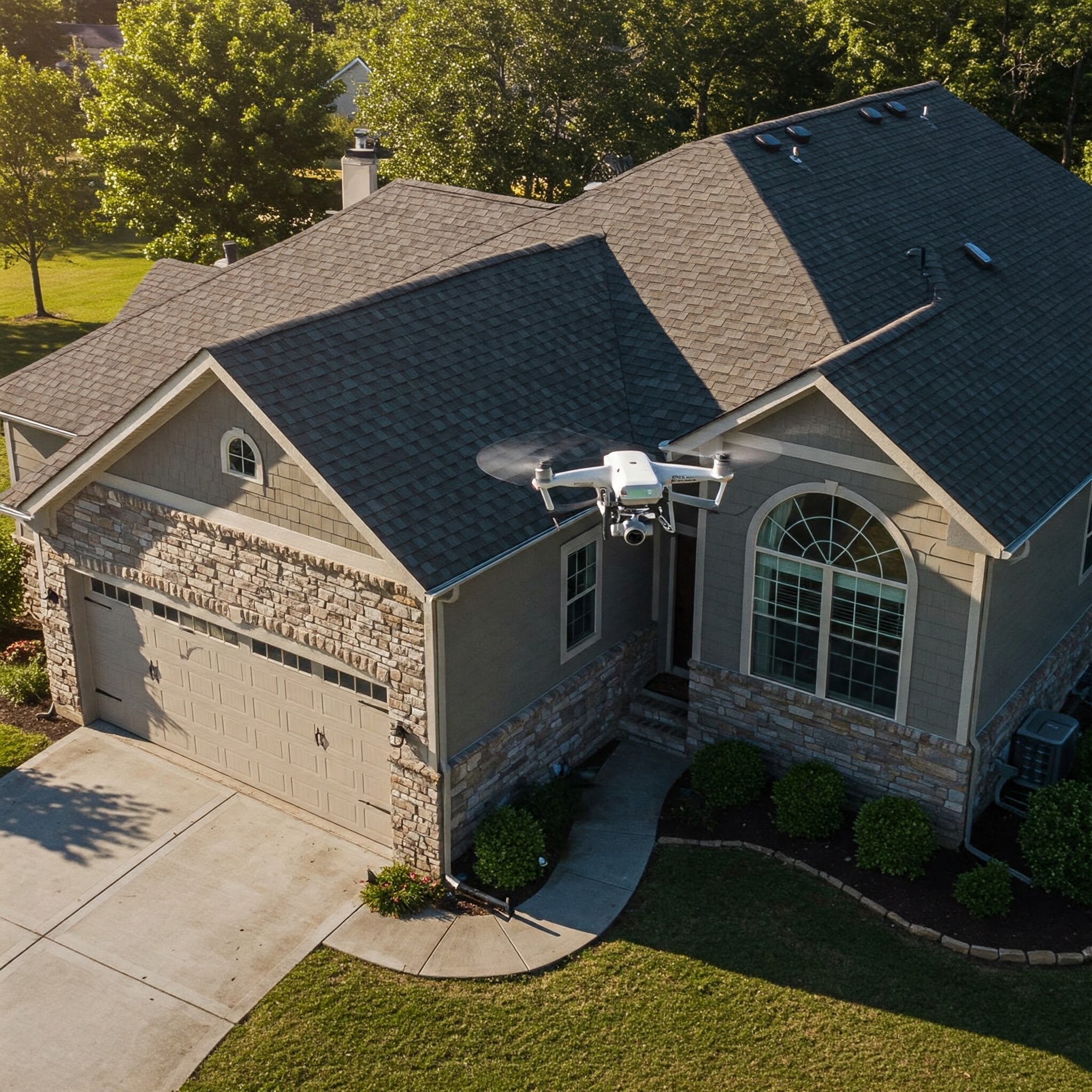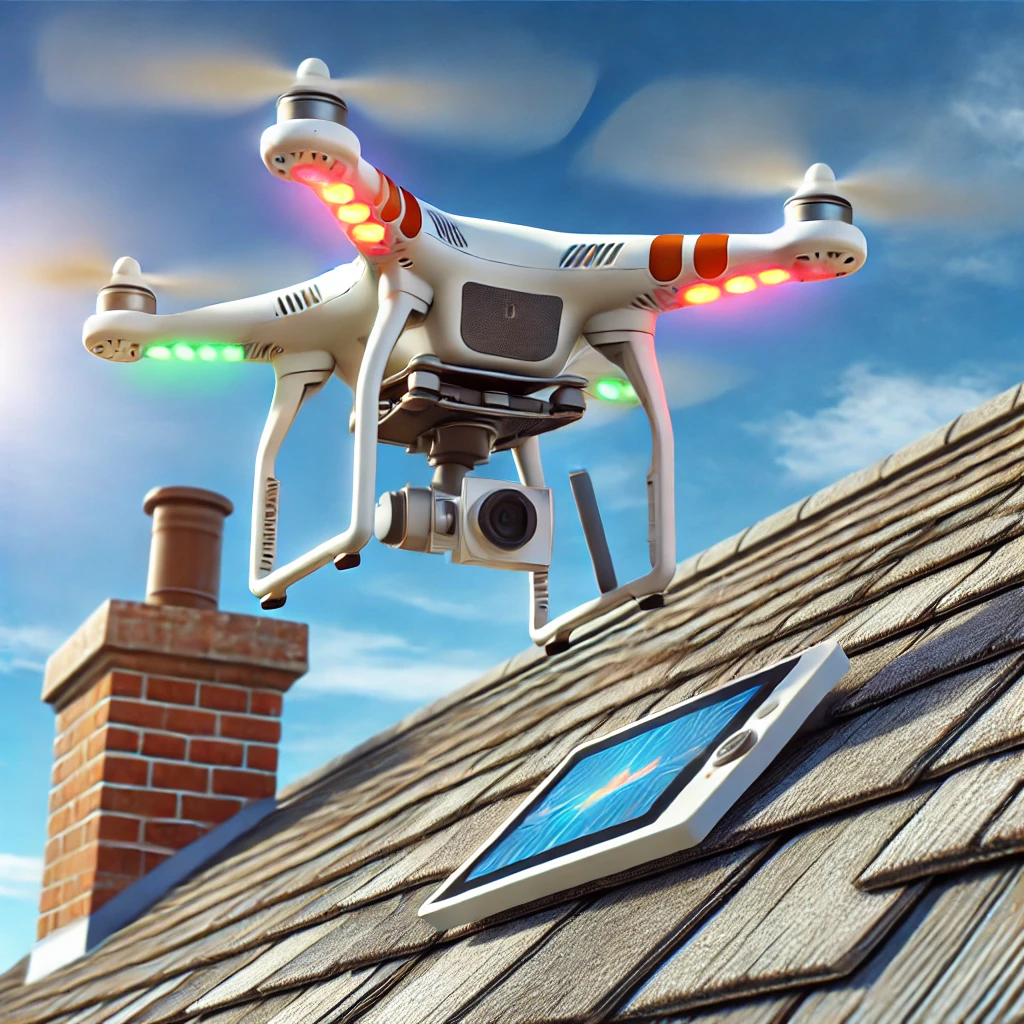Roof inspections are an essential part of home and commercial property maintenance, helping identify damage, structural weaknesses, and other issues that could compromise the integrity of a building. Traditional roof inspections often require physically climbing onto the roof, a process that can be time-consuming, hazardous, and sometimes imprecise. Drone technology is revolutionizing the roofing industry, offering unmatched accuracy, efficiency, and safety.
What Is a Drone Roof Inspection?
A drone roof inspection utilizes unmanned aerial vehicles (UAVs) equipped with high-resolution cameras, thermal imaging, and LiDAR sensors to capture detailed data on a roof’s condition. These inspections provide precise imagery, 3D models, and comprehensive roof reports without the need for manual access to hard-to-reach areas.
The Benefits of Drones for Roof Inspections
Drone roof inspections offer several advantages over traditional methods, making them a game-changer for property owners, contractors, and insurance professionals alike.
-
Enhanced Safety: Eliminates the need for inspectors to climb ladders or navigate steep slopes, significantly reducing accident risks.
-
Time Efficiency: Drones can scan an entire roof in minutes, a fraction of the time required for manual inspections.
-
Cost-Effectiveness: Reduces labor and equipment costs, making inspections more affordable for homeowners and businesses.
-
High-Resolution Data Capture: Drones equipped with thermal sensors and LiDAR can detect moisture intrusion, heat loss, and structural issues that may not be visible to the naked eye.
-
Comprehensive Coverage: UAVs ensure full roof coverage, even in difficult-to-reach areas, providing a thorough assessment.
-
Environmentally Friendly: No need for scaffolding, ladders, or heavy equipment, minimizing environmental impact.
For more on the safety benefits of drones, check the FAA’s Guide on Drone Safety.
Industries That Utilize Drone Roof Inspections
Drone technology is being widely adopted across multiple industries for its efficiency and accuracy:
-
Insurance & Claims Processing: Drones streamline the claims process by providing high-resolution evidence for damage assessment.
-
Real Estate & Property Management: Property owners and real estate professionals use drones for pre-purchase roof assessments.
-
Construction & Roofing Contractors: Drones aid in project planning, roof measurements, and installation quality control.
-
Solar Energy Industry: Solar panel inspections ensure proper placement and identify potential obstructions.
-
Commercial & Industrial Roofing: Businesses rely on drone inspections for preventive maintenance and asset management.
How Drone Inspections Improve Accuracy
One of the most significant advantages of drone roof inspections is their precision. Here’s how UAVs enhance accuracy:
-
High-Resolution Imaging: Captures detailed photos and videos to identify minor defects like hairline cracks or missing shingles.
-
Thermal Imaging Capabilities: Detects heat loss and moisture intrusion, revealing potential leaks before they become major problems.
-
3D Mapping & LiDAR Data: Creates accurate roof models and measurements, ensuring precise documentation.
-
Automated Flight Paths: Reduces human error by following pre-programmed routes for consistent, repeatable inspections.
-
Advanced Reporting & Analysis: Integrates with drone roof inspection software to generate professional reports and DXF files for roof repair planning.
The Cost of a Drone Roof Inspection
The cost of a drone roof inspection varies depending on factors such as roof size, structure complexity, location, and additional services (e.g., thermal imaging). On average, pricing ranges from $150 to $500 for residential inspections and $500 to $1,500 for commercial properties. Investing in drone inspections can prevent costly repairs by detecting issues early.
For more details, check out our guide on the average cost of drone roof inspections.
FAQ
Yes, they are highly accurate, thanks to high-resolution cameras, LiDAR mapping, and advanced software analytics.
Most inspections take 20 to 60 minutes, depending on the roof's size and complexity.
Drones equipped with thermal imaging sensors can identify moisture intrusion and heat loss, key indicators of potential leaks.
In most cases, no. However, drone operators must comply with FAA regulations and local aviation laws.

